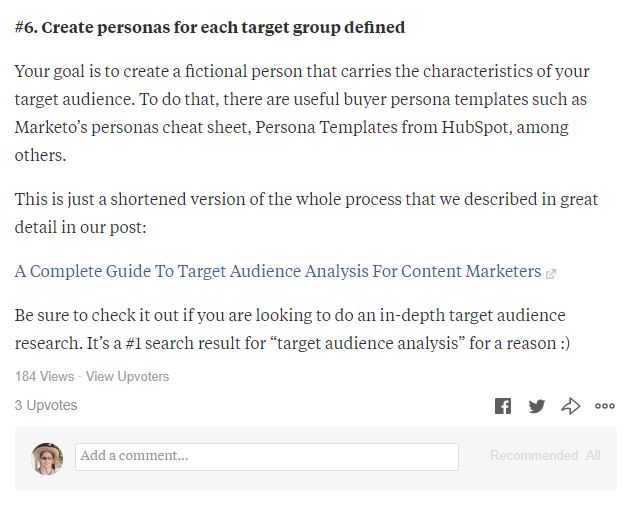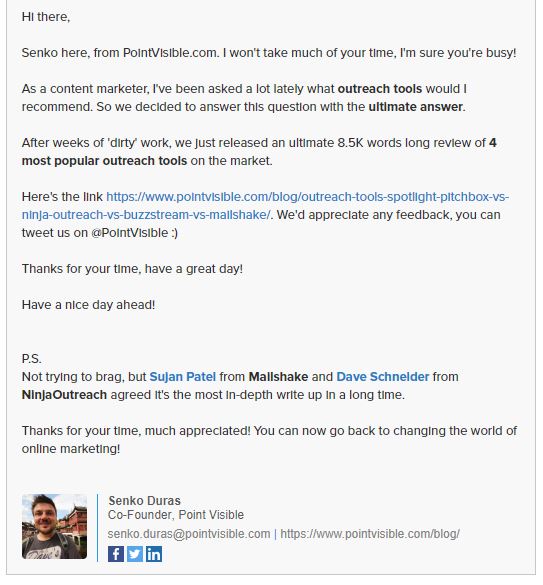Got a brand spanking piece of content that you just know is going to be an immense help to your target audience?
Bet you don’t want it to bomb to the point where no one sees it.
The problem for a lot of small businesses isn’t always the creation of amazing content. Rather, it’s knowing how to then distribute and promote it so that it’s seen by more of the right people.
Because we’re with you on this one and we also want more amazing content seen by high-quality traffic, we’re using this article to take a look at the 4 pillars of content promotion that will help you focus your promotion efforts in the right direction.
Let’s start with …
1. Paid Promotion
Paid promotion works because ads can be a very easy way of upping your engagement. All you do is pay a set fee, create the copy and graphics, determine a target audience, and let Facebook do its thing.
However, there’s a catch – it’s not always so easy to grab people’s attention.
The issue, of course, is creating an ad that works in the first place. And an ad that works is one that is seen by the right people, and which convinces them to click your link so that they’re taken to your content.
Here are a few some small tips for beginners that could go a long way in improving your PPC promotion:
- Make the most of Audience Insights to improve your targeting. Audience Insights shows you who makes up your current page “likes”, including their demographics, age, interests and so on. This information helps you to build a better target audience so that you continue to catch the eye of the right people.
- Make good on your promise. When someone clicks a link on your ad, make sure that the page you take them to is exactly what you promised.
- Perform split tests. Let’s say you’ve got a pretty good ad, but you’re not too sure what headline will work at grabbing attention. Headlines are so important. In fact, stats show that 59% of us share content after having read only the headline. To help you gauge which headlines work best for you, perform split tests. Run the exact same ad but with different headlines. Then, check your analytics to see which one performed the best.
We concentrated on PPC as it is the most commonly used but don’t forget on other paid methods. For example, there are tools like QUUU promote that can automate a part of this process.
If you are interested, you can find out more about it in this QUUU review.
2. Questions and Answers Sites
Q&A sites like Reddit and Quora are fantastic places for you to promote your content.
However, you can’t just post a link and say “here’s my content, guys!”
Instead, the goal is to use these sites – and forums in general – to position yourself as the expert that people can trust.
It’s all about adding value to the community by answering their questions. If they get a lot of value out of your answers, you get to boost your profile and assert your authority. The more questions you answer, the more you will look like an expert. Over time, people will begin to trust you.
But how do you promote your content? Pretty simple (though fairly time-consuming):
- Find questions related to your post
- Give a detailed answer (short and blatantly promotionally posts are often skipped and will greatly diminish your CTR)
- Somewhere in your answer include a link towards your blog post
Here is an example from Quora…

…and a link if you want to read the full answer.
You can do the same thing on different forums in your niche. However, a lot of them will require you to answer a certain number of question or get some upvotes before you can leave links in your signature and answers. If you do decide to go down this route, make sure it is a forum with an active and engaged community or else you are just wasting your time.
3. “Free” Social Media Activity
If you don’t have the cash to splash on paid promotion, the good news is that you can still market your content via social media for free.
There are a lot of people on social networks, and we’ve seen plenty of top-class digital marketers who tell us that they haven’t spent a dime on ads.
Of course, social media is quite noisy, so you have to be creative. But there are lots of hacks you can use:
- Pin your best content on Twitter. It will be the first thing your new followers see
- Add value. Well-researched content that hits on the pain point of your target audience is much easier to promote and has a higher chance to attract shares organically.
- Go live! It’s daunting, but live streaming is totally free and can boost your engagement by 80%.
- Use social media tools. Honestly, your life will become so much easier if you use a tool like Buffer or Crowdfire to manage your scheduling. If you don’t, it’s way too easy to “forget” to post for a whole week! And the key here is staying in the minds of your audience.
- Mention the people you mentioned. Di you mention some tools or people in your article? Tag them on Twitter when you share the article. You never know when you might get some likes and retweets – everybody likes to be mentioned.
Besides everything mentioned, there are plenty of other things you can do. For instance, raise awareness about your post by making a pool and asking your followers a question and provide results in your article.
Being creative is an excellent way to get noticed and is often a requirement if you can’t invest in paid promotion.
4. Blogger Outreach
Another great way to put your content in front of more people that is often overlooked is to get involved with blogger outreach.
How does it work?
- Write a long-form, in-depth piece of content on a certain topic of your choice (you won’t get much engagement if you send over a short mediocre post to a cold audience and ask for a share or a link).
- Identify influencers and other people/brands and send them a short email about your recently published post. You can ask for links/shares/comments/feedback if they like what they see.

Off you go!
So, there you have them – 4 pillars of content promotion, from paid to free, to all that’s in-between.
A key thing to remember here is that great articles deserve heavy promotion and that, in-turn, heavy promotion is only worth it if you are promoting something valuable that can generate traffic in the future.



